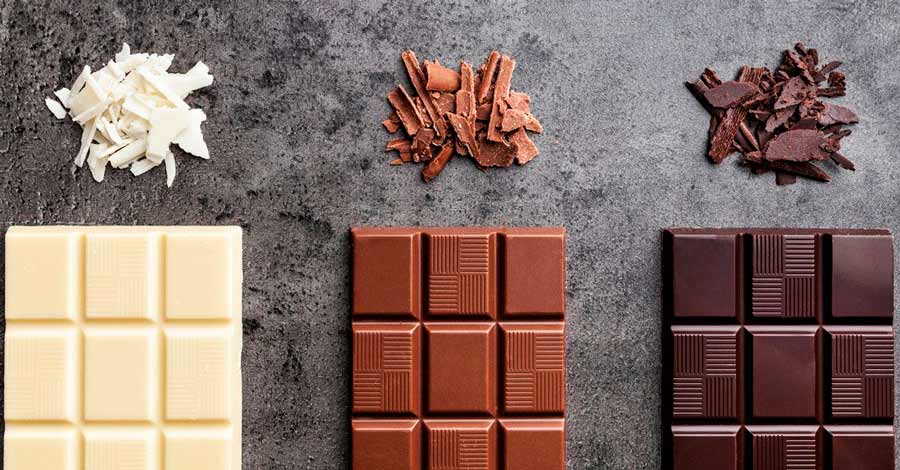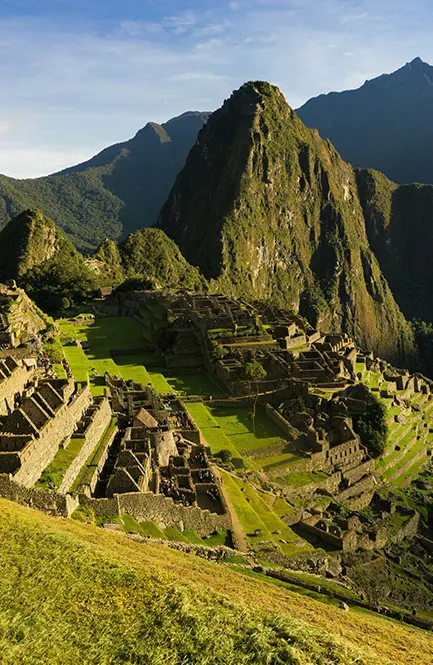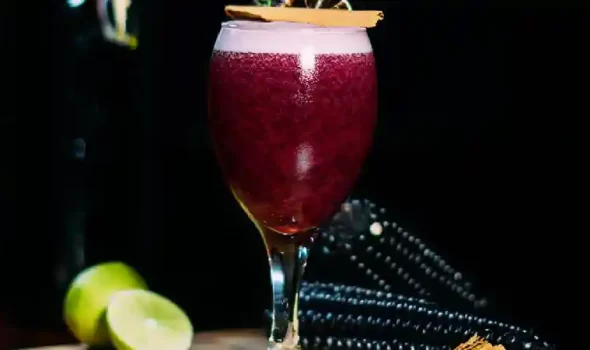|
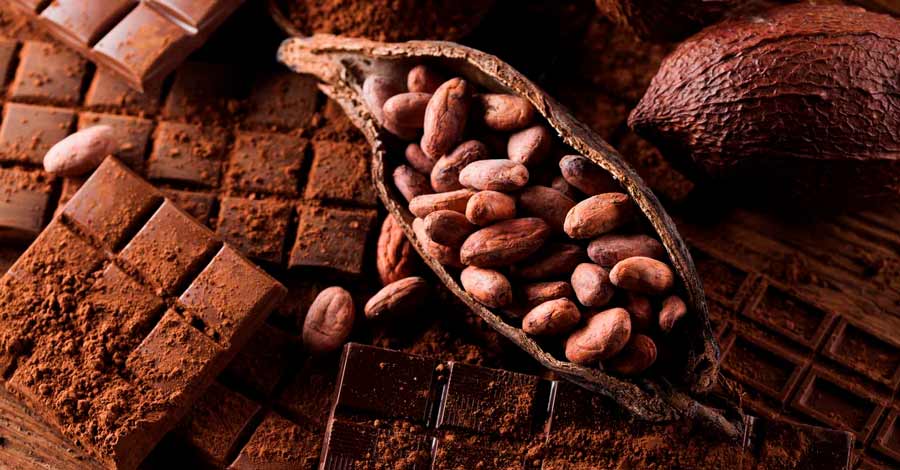
About Peruvian Chocolate, experts say that chocolate is pleasantly received by the great critical mass, it is affirmed that 9 out of 10 people are passionate about chocolate.
Peru is one of the main cocoa-growing countries, possessing 60% of the world’s cocoa varieties. Peruvian cocoa has undoubtedly become one of the highest quality Peruvian products in the world, as well as coffee, creating top-quality chocolate.
Let’s explore with Auri Peru this and many other details about this millenary cocoa bean and the delicious chocolate that enchants the palate of most people on this planet.
Origin of the term cacao
The words by which cacao and chocolate are known today derive from the names given to them by the Mesoamerican cultures. Cacao derives from the Mayan term “kakaw”, a word that referred to the red color of cacao seeds and the ideas of strength and fire that the indigenous people associated with it. From there it passed to Nahuatl as “cacahuatl”, a word used to refer to “cocoa water”, a drink practically limited to nobles and merchants due to the high price of cocoa.
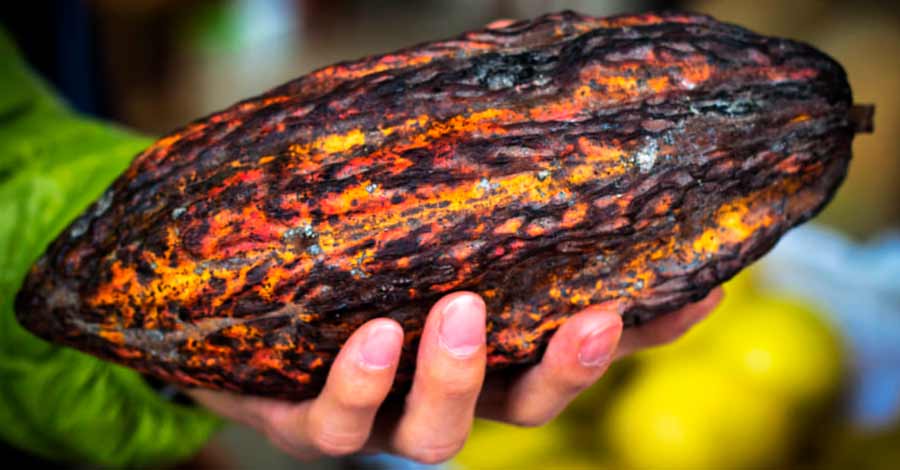
What is the origin of the word chocolate?
On the other hand, the etymology of the word chocolate seems to be linked to the Nahuatl term “xocoatl”, a word composed of xococ (bitter) and atl (water). In its origin it was a drink that had nothing to do with chocolate, but was basically composed of water and ground corn.
Is chocolate the same as cocoa?
It is not the same, cocoa is the basic raw material used to make chocolates and it is also responsible for its particular flavor. Cocoa is a very bitter product, so to make it more appetizing, other ingredients such as sugars, fats or milk are added during the process of transformation into chocolate. It is the presence of these ingredients, and the process of elaboration itself, which makes the two products very different.
A Brief History of Chocolate
It can be said that chocolate has a long and enigmatic history. Cocoa is an ancient food whose origin is still a matter of debate. The first evidence of cocoa cultivation is found in South America, specifically in the Orinoco and Amazon valleys, although there are many authors who continue to defend a Mesoamerican origin.
Chocolate was called the drink of the gods in Mayan and Aztec mythology, and it is not for less, the trick of the wonderful flavor of chocolate lies in its main ingredient, cocoa. The cocoa beans that are the raw material for its elaboration were even used as currency in these ancient Mesoamerican cultures, even after Spanish conquest.
The first civilization to cultivate it more than 2500 years ago were the Olmecs, it is said that they discovered that the cocoa fruit was edible when they observed rodents feeding on it.
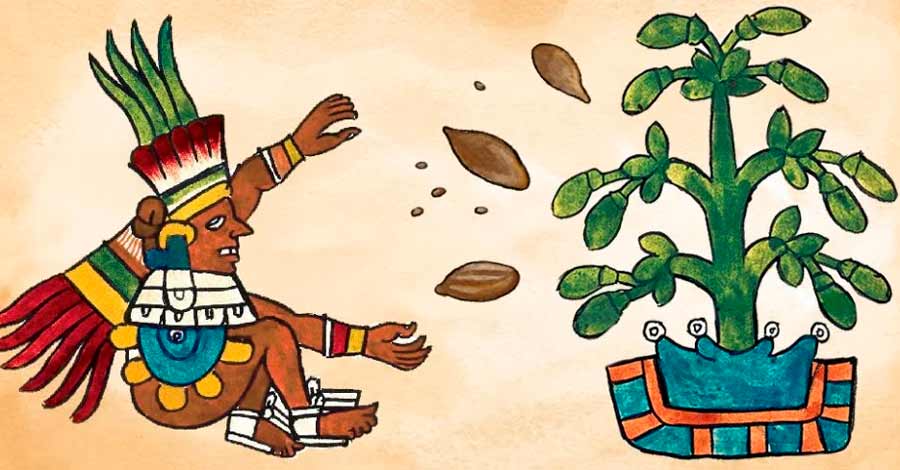
Several centuries later, Mayas inherited the culture of cacao from the Olmecs in ritual uses. According to their beliefs, cocoa was one of the four trees located in the universe with an essential relationship with corn. With cocoa beans, the Maya and Aztecs made a bitter and strong-tasting drink called xocoatl, which was consumed by the ruling classes and priests during sacred rituals. The difference between the xocoatl of the Maya and Aztecs is that the first ones served it hot and for the second ones it was an essentially cold drink.
In Aztec society, drinking cocoa without consent was severely punished, even with life, and the transgression was considered a yollotlieztli (“price of blood and heart”).
The drink of the Gods
Ancient Mesoamerican civilizations believed that cocoa was a gift from the gods that could only be consumed by the elite and warriors. For the Mayas, it was the god Hunalpú who left this gift to humanity. While for the Mayas it was their god Quetzalcoatl, the divinity in the form of a feathered serpent, who descended to Earth to teach men the sciences and arts, leaving them the gift of the cocoa tree: “queachahuatl”.
Men called it the “drink of the gods”, since from it they obtained a drink only worthy of them, priests and nobles.
Cacao as a trade exchange currency
For these Mesoamerican peoples, cocoa had great value. Among the multiple uses they gave it, it even served as an exchange currency. The privileged groups had control of cocoa due to the special conditions for its cultivation, not all the population had access to this sacred grain. In addition, cocoa beans could be easily counted, preserved, stored and transported. Everything that could be traded had a price paid with cocoa beans.
According to calculations in 1545, a large tomato was equivalent to one bean, a turkey egg to three, a pumpkin to four, with ten seeds you could buy a rabbit, it was even said that with 100 you could buy a slave.
Arrival in Europe
In 1502, it is said that during Columbus’ fourth voyage, he encountered a Mayan ship carrying the famous grain. Although Christopher Columbus refused to taste the grain, later the conquistador Hernán Cortez did taste it at the banquets offered to him by the Mayan emperor Moctezuma. Hernan Cortez would send the first shipment of cocoa to Spain in 1528. When cocoa arrived in Spain, it hardly aroused interest because it was a cold drink with a bitter and strong flavor.
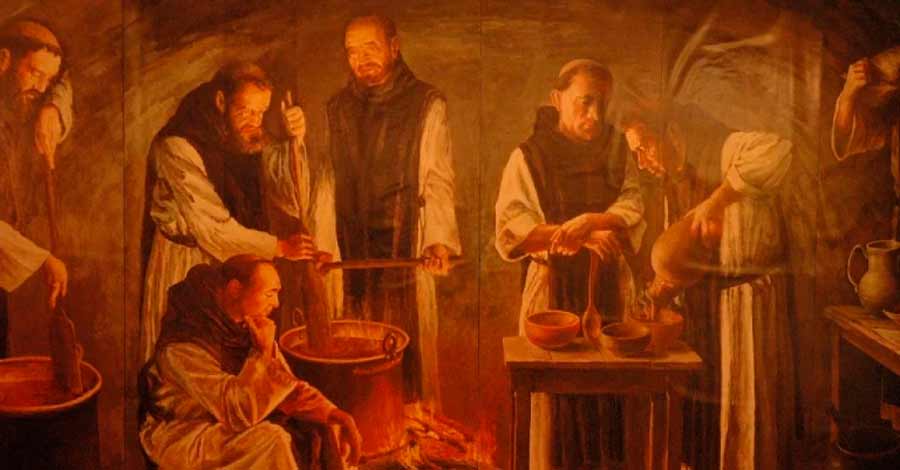
|
European monks were the ones who adapted it to the European palate by adding honey, sugar, vanilla, cinnamon and serving it hot. This is how Europeanized chocolate became a delicacy reserved for the nobility. Even its preparation was considered a state secret for almost 100 years.
Subsequently, chocolate spread throughout Europe. As early as 1567, a French citizen residing in London opened a coffee shop, “The Coffee Mill and Tobacco Roll”, in which solid chocolate pills were sold to prepare the drink in Spanish style. The mass production of chocolate began in 1728 with the first chocolate factory of the British Fry family. In 1875, the Swiss Daniel Peter took advantage of Henri Nestlé’s invention of powdered milk to mix cocoa with sweetened condensed milk, thus producing the world’s first milk chocolate.
Chocolate in the contemporary world
By the 20th century, the fall in the price of chocolate, cocoa and sugar finally made chocolate affordable for everyone. During the Second World War, chocolate bars were introduced by the United States as an excellent food for the Allied troops. At the end of the war, back home, the troops wanted to continue consuming it, which strengthened the market for chocolate. In the 21st century, manufacturers have been expanding the range of products they offer, from milk chocolate to dark chocolate. Chocolates with different variations of cocoa, and all possible and unimaginable flavors when combined with fruits, spices, liqueurs or plants.
Main Chocolate Producing Countries in the World
Although chocolate is mainly consumed in developed countries, cocoa is mainly grown in developing countries. Due to the fact that the cocoa tree requires specific and stable humidity conditions, its production is concentrated in a small geographical area between the tropics of Cancer and Capricorn.
The three main growing areas in the world are West Africa, Southeast Asia and South America (its probable place of origin). Although data fluctuates constantly, the main producing countries worldwide are Ivory Coast (36%), Ghana (21%), Indonesia (10%), Nigeria (6%), Cameroon (5%), Brazil (5%) and Ecuador (5%), contributing between them more than 90% of world cocoa production.
Although the largest cocoa producers are African countries, South American chocolates continue to stand out for their quality and variety. Asian cocoa, on the other hand, is less aromatic and paler in color; the latter is usually used in the production of milk chocolate and couvertures.
Main Chocolate consuming countries in the world
The main cocoa and chocolate-consuming countries are European countries. At the top of the list is Switzerland, with about 11.9 kg of chocolate per person per year, followed by Ireland (9.9 kg) and the United Kingdom (9.5 kg). Austria, Belgium, Germany and Norway consume more than 8 kg per person, and France almost 6.5 kg per year. In Spain, the average per capita consumption is around 3.2 kg.
The other major cocoa consumer is the American continent, with Canada (6.4 kg/person) and the United States (5.68 kg per person per year). In South America, Brazil stands out, with more than 2.5 kg per person per year. In summary, the growth in chocolate consumption in recent years has been colossal.
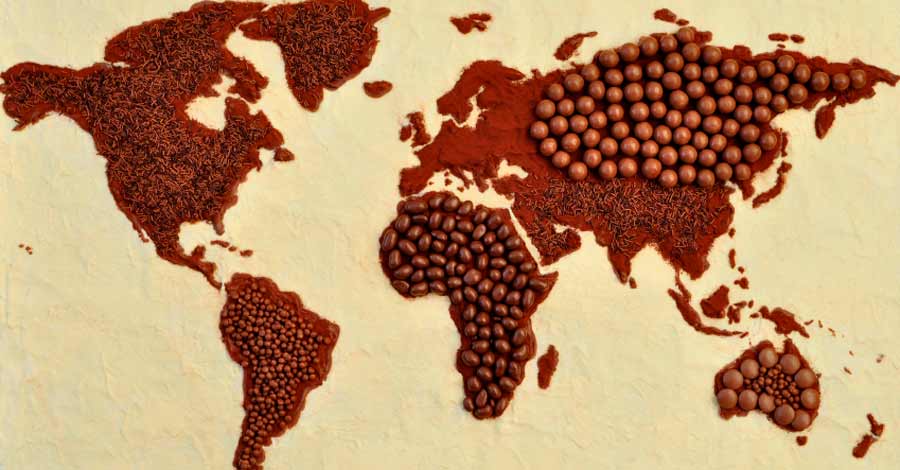
Peruvian chocolate
Peruvian Chocolate has 60% of the world’s cocoa varieties. It has been qualified by the International Cocoa Organization (ICCO) as a country where fine cocoa with excellent aroma is produced and exported, Peru achieves 36% of the world’s cocoa production with these characteristics. Peruvian cocoa has also received international awards in recent years and has been ranked as one of the best in the world, which is why some of the most exclusive chocolate factories in Switzerland, Belgium and France make their products with Peruvian cocoa.
Peruvian cocoa is grown in the lower part of the western slopes of the Andes and in the Peruvian jungle, between 300 and 900 meters above sea level. The main regions where it is grown are Cusco, San Martin, Amazonas, Piura, Ayacucho and Junin, which account for 80% of total national production of Peruvian Chocolate.
It is important to highlight that Peruvian cocoa is always present in international gastronomic fairs. Events where people enjoy everything from the fruit to nips and chocolates with different percentages of cocoa purity.
Brief history of cocoa in Peru
In ancient Peru, unlike the Central American cultures, cocoa did not have that Inca noble distinction factor as coca and corn did. After the arrival of Spaniards in America and later, the commercial projection of the bean was limited. The regions of Guayaquil and Jaén, located in the northeastern region of the Viceroyalty of Peru, were the major suppliers of cocoa in the Colony, and not only for Lima, but also for Potosí. Cocoa underwent a long gradual process of constant improvement and commercialization. Since the 19th century, the manufacture of cup and bar chocolate has been recorded in Peru.
During the last decades, cocoa became a Peruvian Super Food that experienced a great increase in its production and exportation, besides being the base ingredient of the famous Peruvian chocolate.
The fruit of the cocoa tree
The fruit of the cocoa tree, which gives origin to Peruvian chocolate, has the shape of a large oval pod with a length varying from 15 to 35 cm. Its weight varies from 200 to 1,000 grams. Its external appearance, its color, is an indicator of its state of maturity and the optimum time for harvesting.
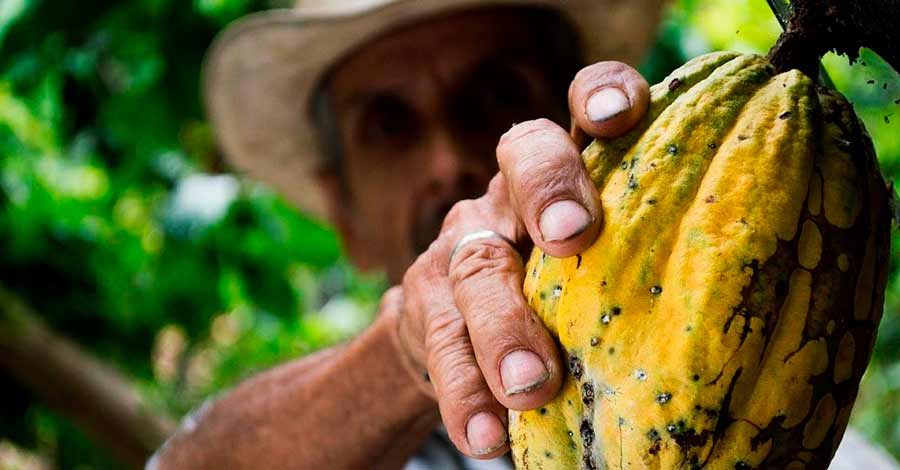
The green color of the fruit indicates that it is still immature; yellow, that it is in the process of ripening, and red, that it has ripened and can be harvested. Inside the fruit are located about 30 to 40 oval seeds (also called cocoa beans or grains) that are wrapped in a whitish, mucilaginous and viscous pulp. This pulp is highly appreciated by collectors for its delicious and delicate exotic fruit flavor.
The aroma and final quality of cocoa products depend not only on the cultivation and harvesting but also on all the processes that take place after the harvesting of this millenary bean.
How is cocoa processed?
The first step in the elaboration of chocolate begins with the extraction of the cocoa beans from the pod, this step is the fermentation. This is done by stacking and compacting the seeds between banana leaves, piles, wooden boxes or in baskets. Fermentation lasts between five and seven days and is essential to reduce bitterness. During the process, microorganisms such as yeasts and bacteria intervene, decomposing the fleshy part of the fruit around the seeds and transforming the sugars in the pulp into alcohol and acetic acid. The seed swells to resemble a coarse almond and turns from purple to chocolate brown.
The next step is drying, this process stops fermentation and can take several days depending on the method used. Sun drying is the simplest, cheapest and most effective. The seeds are arranged in a thin layer on wooden surfaces, drying trays, sacks or on cement. They are dried slowly until the residual moisture content of the grains is around 7%.
Once the beans have been fermented and are dry, they are ready to be processed into chocolate and stored in baskets or sacks awaiting shipment to cocoa companies.
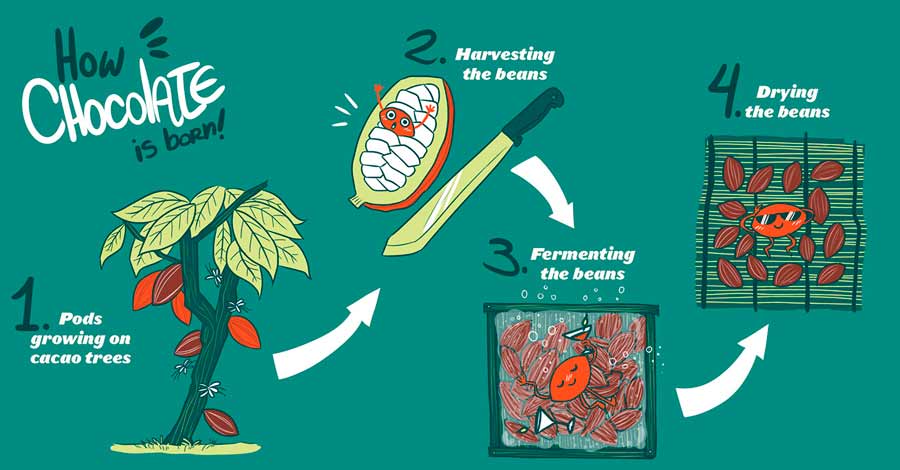
Cacao Varieties
As in coffee, the variety of cocoa affects the flavor, price and production of a bar present in all markets. When speaking in agronomic terms, the subspecies cacao is known as the “cacao criollo” variety, and the subspecies sphaerocarpum is the “forastero”. The product of both is known as “trinitario”.
Criollo
The Criollo variety has its origin in Central America, it is the variety that was disseminated in Europe by the colonizers. Today, what is known as Criollo and used to make chocolate is actually a broad spectrum of plants with very different genomes. This variety is cultivated in Mexico, Guatemala, Nicaragua, Venezuela, Brazil, Colombia, Peru, Caribbean islands, Trinidad, Jamaica and the island of Grenada. Outside the Americas, it is cultivated in Madagascar, Java and the Comoros Islands.
It represents between 5% and 8% of the world production, the most outstanding varieties of criollo cocoa are the criollo porcelana, considered one of the best cocoas in the world; the criollo andino, which produces red and green fruits before ripening, and the criollo pentágona, which produces fruits with five prominent edges.
Forastero
The forastero variety is native to the Upper Amazon. It is cultivated mainly in Peru, Ecuador, Bolivia, Colombia, Brazil, the Guianas and Venezuela. It has expanded to West Africa and Southeast Asia, regions that account for between 80% and 85% of world production, which is exported mainly to Europe and the United States. It is made up of ten different genetic groups that differ in shape, color and flavor.
This type of cocoa is strong, bitter and slightly acidic to the palate. It is very aromatic, but without finesse, diversity of flavors or aromatic subtleties. For this reason, it is used for chocolates considered not fine and much more commercial.
Trinitario
The trinitario variety is a hybrid between the criollo cocoa and the forastero cocoa. It is native to the island of Trinidad, but has never been found in the wild. It has spread throughout Latin America and the Caribbean.
This type of cocoa is more aromatic than forastero cocoa and more resistant than criollo cocoa. It represents between 10% and 15% of world production. It has an average of 50 types, among which stand out the varieties Guayaquil, Ceylon, Patastillo, lagarto, white ivory, Uranga, porcelain, Matina, pajarito, Sanchez, among others.
Peruvian chocolate brands
Some of the most recognized Peruvian chocolate brands are the following:
- Marana
- Magia Piura
- Kuyay
- Exotic Chocolate
- Cacaosuyo
- Ura Chocolates
- Mito
- Amazona
Peruvian Chocolate from Cusco
Referring purely to Peruvian Chocolate, in Cusco, the emblematic chocolate is the so-called “Sol del Cusco” (cup chocolate), star product of the company Incasur, founded in the Imperial City on February 29, 1968 under the name of Molino Industrial Ortiz Candia, directed by Mr. Antonio Ortiz Candia. This chocolate was inspired by the idea of giving value to the ancestral beans that the Spaniards had tried to eliminate during the conquest.
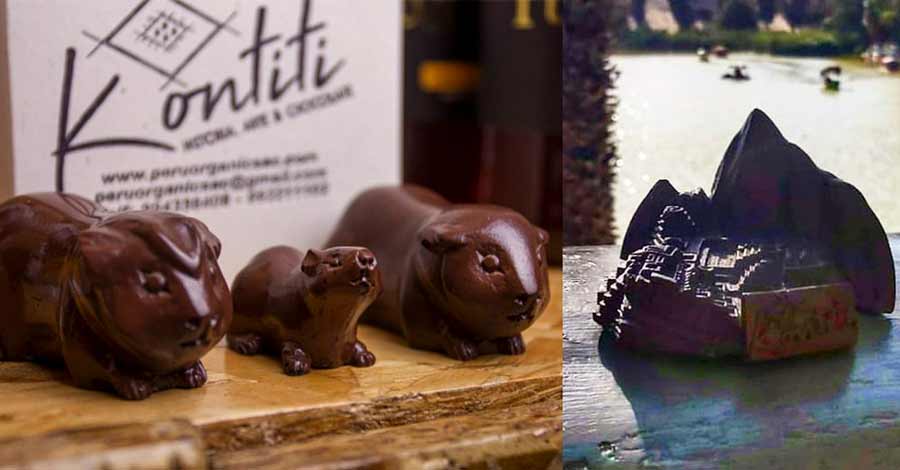
With more than 50 years in the Peruvian market, Sol del Cusco is one of the most remembered brands in the minds of Peruvian consumers, and Incasur exports its products based on Cusco cocoa to several countries in South America and Europe.
Kontiti chocolate is also famous among tourists, who do not hesitate to take as a souvenir of Cusco, some chocolates in the shape of Machu Picchu, a traditional Tumi, an Inca aríbalo, llamas or small guinea pigs finely carved and made from cocoa from the Cusco jungle. The Cusquenian chocolate “Kontiti” sells more than just chocolate, it offers history and art through the use of the delicious Cusquenian cocoa.
Production of cocoa paste and chocolate
To make chocolate, cocoa beans go through several processes: roasting and dehulling, milling and pressing.
Once the beans arrive at the cocoa and chocolate-producing industries, they are first roasted at a temperature of 100 to 140°C for 45 to 90 minutes. During this process, numerous physical and chemical changes take place that will finish developing the aroma of cocoa, an aroma that had begun during the fermentation and drying process of the beans.
After roasting, the beans are dehulled, and then they are milled. The result at the end of the process is a homogeneous mass called cocoa liquor or cocoa paste. The cocoa paste is then pressed in order to degrease it, separating the solid part from the liquid by means of hydraulic presses. The liquid part corresponds to the cocoa butter and contains most of the fat. The solid part is the cocoa paste and contains a very low percentage of fat (between 6% and 20%).
From this point on, the production process can follow two different directions, one aimed at obtaining defatted cocoa powder and the other for the production of chocolate.
Obtaining defatted cocoa powder for Peruvian Chocolate
For the manufacture of cocoa powder, only the pressed paste is used, without butter. The pressed paste is broken into small pieces and pulverized to form defatted cocoa powder.
It should be noted that this natural defatted cocoa powder (with a very low percentage of fat and no sugar) should not be confused with the powdered chocolates or soluble cocoas normally found on the market: considerable quantities of sugar are added to these products (more than 45%) and their cocoa content does not exceed 30%.
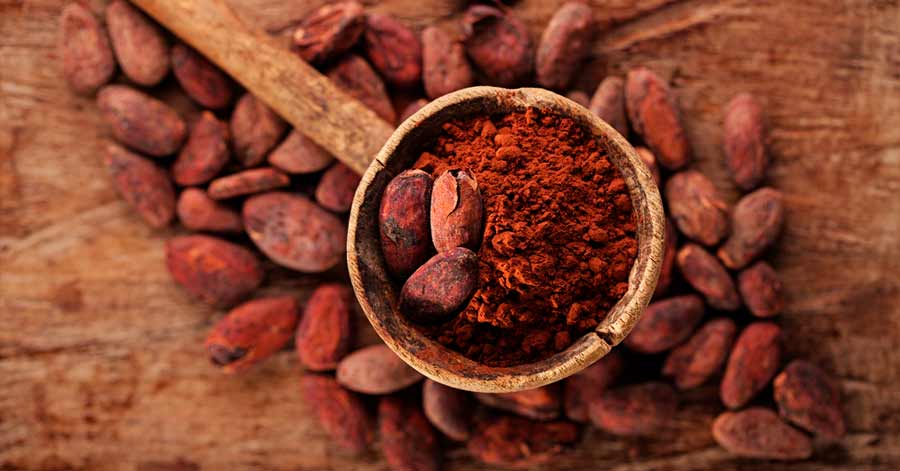
Chocolate processing
To obtain the different types of chocolates, both cocoa butter and cocoa paste are needed, in different proportions and mixed or not with additional ingredients (sugar, powdered milk and others). Mixing is carried out for 12-15 minutes at a temperature of 40-50 ºC.
It is then subjected to a refining process using a series of steel rollers to improve the texture of the chocolate. Refining produces a smooth paste with a sufficiently small particle size, less than 30 µm, so that the chocolate does not have a sandy texture when ingested.
The next step is conching. During this process, the paste is kneaded and softened to better develop the original flavor and texture of the product. For this purpose, the refined chocolate is placed in tanks and agitated for several hours (usually 10-12) at temperatures above 40-50°C.
Finally, tempering is carried out. This last phase is critical for the perfect solidification and finishing of the chocolate. It consists of heating and cooling the chocolate more or less rapidly for a correct crystallization of the fat to obtain a crunchy chocolate with a very shiny appearance. Tempering gives the chocolate some of its most recognizable qualities: a shiny appearance, a smooth luster and a nice snap when biting.
All that remains is molding: placing the mixture in molds, placing them in a cooling chamber and thus obtaining the tablets or any other desired shape.
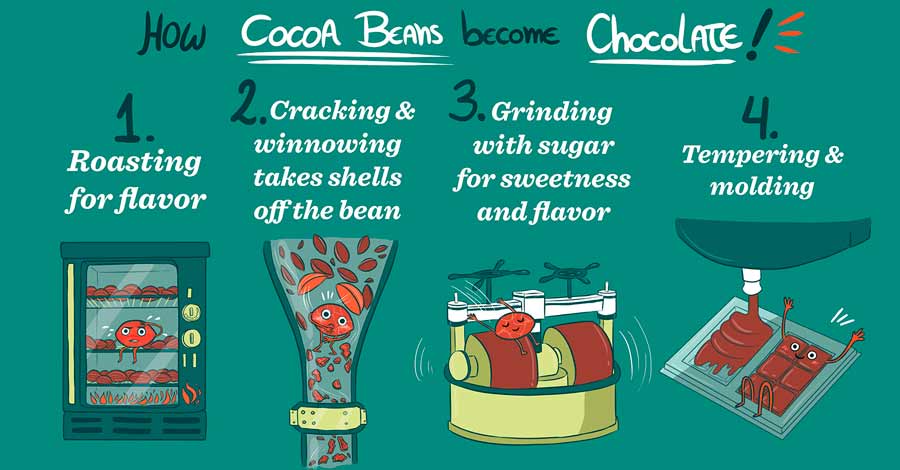
Types of chocolate
The three basic types of chocolate that form the basis of the entire range of products on the world market are dark chocolate, milk chocolate and white chocolate. We can find these different varieties in Peruvian chocolate.
Dark chocolate
Dark or bitter chocolate is the most appreciated for its pure flavor. It is considered the chocolate itself, since it is the result of mixing cocoa paste and butter with sugar, without the addition of any other product. To be considered dark chocolate, it must contain at least 50% cocoa paste, a level at which the bitterness of the cocoa begins to be appreciated. A chocolate with a cocoa composition of 70% is of higher quality and purity, which means that the chocolate is healthier than one with 50%, i.e. the higher the percentage of cocoa, the better the quality of the chocolate and the better the quality.
Milk chocolate
Milk chocolate is the most popular cocoa derivative and the most widely consumed by the population. As the name suggests, this variety of chocolate has milk added to it and is made with cocoa mass, cocoa butter and sugar. In this case, the proportion of cocoa mass is below 35-40%. In exceptional cases, some major chocolate brands produce bars with unusual cocoa proportions, above 40%.
White chocolate
White chocolate is considered to fall into the category of special cocoa butter derivatives. Strictly speaking, it is not a chocolate, since its composition lacks cocoa paste, which is the material that provides the properties of cocoa. It must contain at least 20% cocoa butter, milk and sugar. It is an extremely energetic and sweet product.
How to taste a bar of good Peruvian chocolate with the five senses
Chocolate is a product that is also consumed for its sensory or organoleptic properties, in other words, properties that can be perceived directly with the senses. To evaluate the quality and complexity of different chocolates, tastings similar to those of wines are carried out. The fundamental difference with other types of tastings is that in chocolate tastings, the five senses must necessarily be used.
- When observing the chocolate, the uniformity of the color and the absence of whitish spots indicating temperature changes must be checked. In general, great chocolate should have a shiny, smooth appearance and a uniform color.
- Through touch, we can appreciate the texture of the chocolate, by caressing the chocolate we can appreciate if the texture is smooth, rough, or grainy and we can also feel its fineness.
- The sense of hearing also provides information about the quality of the chocolate. To do this, the bar should be broken close to the ear to hear the noise it produces. Good chocolate, when broken, should make a short, dry noise, a very characteristic crack known as a snap.
- Thanks to the sense of smell we perceive the smell and aroma of chocolate, that is, for olfactory analysis, we use both direct olfaction, by bringing the nose close to the chocolate and breathing in deeply, and indirect olfaction, after the chocolate has been crushed and placed in the mouth. In this way, the characteristic smells of cocoa are perceived, as well as those derived from the different ingredients. High-quality chocolate must maintain a persistent and intense aromatic presence of cocoa.
- The sense of taste is used to discover all the flavors, allowing the chocolate to melt on the palate. With the help of the tongue, the chocolate is distributed throughout the mouth to reach the maximum number of taste buds. In this way, sweetness, acidity, and bitterness can be perceived. Good chocolate must have a persistent flavor over time; the rapid disappearance of the flavor reflects the use of poor-quality cocoa. For maximum pleasure, chocolate should be eaten slowly and in small quantities.
Benefits of Peruvian chocolate
The benefits of a good chocolate will vary according to the purity levels. Among its nutrients are unsaturated fatty acids, fiber, minerals such as magnesium, phosphorus and potassium, alkaloids such as theobromine and, above all, phenolic compounds or polyphenols such as flavanols. We know that these components have demonstrated a beneficial influence on the body. Some of these benefits are:
- Unsaturated fats contribute to cholesterol control.
- It provides vitamins E, B1 and B2; iron, copper, calcium, chromium and zinc.
- Fiber regulates intestinal transit and improves blood lipid and glucose levels. Minerals contribute to the regulation of blood pressure, neuronal transmission and memory, muscle relaxation and contraction, as well as the growth and maintenance of the bone system.
- Alkaloids stimulate the nervous system, produce a feeling of well-being, improve mood and enhance physical performance, reaction time and thus alertness.
- Flavanols have antioxidant and anti-inflammatory effects, have cardioprotective effects, promote vasodilation, reduce hypertension and help control cholesterol. They can also prevent the development and progression of some types of cancerous processes while protecting against neuronal deterioration and favoring learning processes, memory and cognitive function in general.
There is no scientific evidence to support the harmful effects that have been popularly linked to cocoa and chocolate, myths such as tooth decay, acne, migraines or that it can be really addictive. However, it is also difficult to quantify the bioavailability of the healthy compounds in cocoa, i.e. to what extent they are used by the body and in what quantities they should be ingested to benefit from their positive effects.
It is hoped that scientific studies on bioavailability and human intervention will be carried out in the coming years to better refine and specify these questions and to determine more accurately the healthful components of cocoa and the amount recommended for a healthy diet.
Peruvian chocolate and Peruvian coffee experience in Cusco
Auri Peru offers you a fusion of history with chocolate as you’ve never drunk it before. Great concept and you can even make your own chocolate. This tour gives you the chance to experience unique moments with local producers and their families. The Peruvian producers will teach you everything about organic production and the cocoa, coffee, tea and other plants with the «Fair trade» seal.
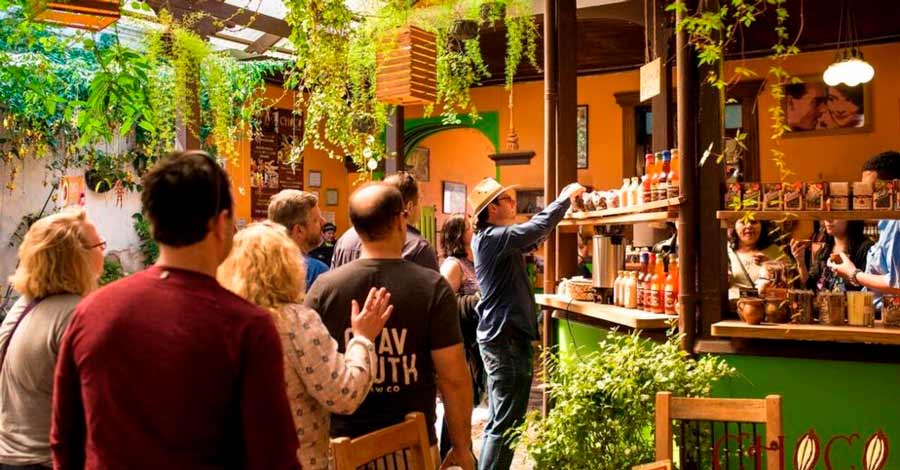
Short Itinerary
Day 1: Cusco City – Huayopata Village
Visit a cacao plantation and learn how chocolate is made!
Day 2: Huayopata Farm – Cusco
Prepare your own hot chocolate with cocoa freshly grounded.
As we have seen, to talk about chocolate is to open up to a world of flavors, aromas, traditions, and a lot of history. The lush Peruvian jungle is the cradle of this enormous native treasure that provides great nutritional value and great benefits for human health worldwide. Peruvian cocoa ranks above its peers produced in chocolate powers such as Belgium, Switzerland or France. Therefore, to speak of Peruvian chocolate is synonymous with quality and finesse in the chocolate industry.
Peru has many incredible places to discover. With many years of working in the travel industry, Auri Travel is happy to help with your travel plans to Machu Picchu and other places around the country. Come and enjoy your Peruvian Adventure with us!




